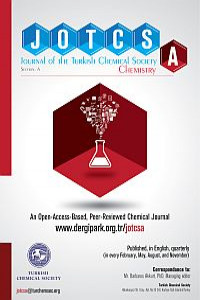Abstract
References
- 1. Wang YJ, Zhag YQ. Three-Layered Sericins around the Silk Fibroin Fiber from Bombyx mori Cocoon and their Amino Acid Composition. AMR. 2011 Jan;175–176:158–63.
- 2. Liu X, Zhang K-Q. Silk Fiber — Molecular Formation Mechanism, Structure- Property Relationship and Advanced Applications. In: Lesieur C, editor. Oligomerization of Chemical and Biological Compounds [Internet]. InTech; 2014 [cited 2021 Dec 11]. ISBN: 978-953-51-1617-2. <URL>
- 3. Sashina E, Heinemann K, Horst B, Novoselov N, Frank M. Method for dissolving natural silk. Russian Federation Patent, no: 2385649, 2007.
- 4. Kunz RI, Brancalhão RMC, Ribeiro L de FC, Natali MRM. Silkworm Sericin: Properties and Biomedical Applications. BioMed Research International. 2016;2016:1–19.
- 5. Brestkin YuV. Dynamic coil–extended chain phase transition in the longitudinal field. Acta Polym. 1987 Aug;38(8):470–7.
- 6. Geller B, Geller A, Chirtulov V. Practical Guide to Physical Chemistry of Fiber-Forming Polymers. Vol. 432. 1996. 432 p.
- 7. David V. Introduction to Biophysics. Mir Publishers; 1982. 210 p.
- 8. Zhang H, Li L, Dai F, Zhang H, Ni B, Zhou W, et al. Preparation and characterization of silk fibroin as a biomaterial with potential for drug delivery. J Transl Med. 2012 Dec;10(1):117.
- 9. Tanaka K, Inoue S, Mizuno S. Hydrophobic interaction of P25, containing Asn-linked oligosaccharide chains, with the H-L complex of silk fibroin produced by Bombyx mori. Insect Biochemistry and Molecular Biology. 1999 Mar;29(3):269–76.
- 10. Holmes F, Smith D. Sedimentation and Diffusion of Soluble Fibroin. Nature. 169:193.
- 11. Coleman D, Howitt F. Studies on silk proteins I. The properties and constitution of fibroin. The conversion of fibroin into a water-soluble form and its bearing on the phenomenon of denaturation. Proc R Soc Lond A. 1947 Jul 8;190(1021):145–69.
- 12. Feng Y, Lin J, Niu L, Wang Y, Cheng Z, Sun X, et al. High Molecular Weight Silk Fibroin Prepared by Papain Degumming. Polymers. 2020 Sep 16;12(9):2105.
- 13. Eshchanov KO, Baltayeva M, Sarimsakov A. Determination of the Molecular Mass of Silk Fibroin Using the Method of Spectrophotometry. Annals of RSCB. 2021;25(2):4083–90.
- 14. Eshchanov KO, Baltayeva M, Sarimsakov A. Purification of Cottonseed Oil Using A Sorbent Obtained from the Fibrous Waste of Natural Silk. Annals of RSCB. 2021;25(1):692–8.
Determination of the molecular mass of hydrolyzed fibroin obtained from natural silk fibroin by spectrophotometry
Abstract
In our previous scientific publications, we have recommended spectrophotometry as a method for determining the molecular mass of silk fibroin. As a result of our research, we were able to obtain hydrolyzed fibroin (“HF”) with high polyfunctional high sorption properties from natural silk fibroin by thermal methods under acidic conditions and the influence of VHF rays. We used spectrophotometry to determine the molecular mass of “HF” obtained by two different methods. It was observed that there are differences between the molecular masses of “HF” obtained by thermal methods and under the influence of VHF rays. It was found that the molecular mass of “HF” obtained thermally under acidic conditions was 246,6 kDa, and the molecular mass of “HF” obtained under the influence of VHF rays was 307 kDa. The main reason for the different molecular masses of “HF” was considered to be the fact that the process duration of “HF” production methods varies.
Keywords
Spectrophotometry hydrolyzed fibroin(“HF”) ultra-high frequency(VHF) rays UV spectrum molecular mass
References
- 1. Wang YJ, Zhag YQ. Three-Layered Sericins around the Silk Fibroin Fiber from Bombyx mori Cocoon and their Amino Acid Composition. AMR. 2011 Jan;175–176:158–63.
- 2. Liu X, Zhang K-Q. Silk Fiber — Molecular Formation Mechanism, Structure- Property Relationship and Advanced Applications. In: Lesieur C, editor. Oligomerization of Chemical and Biological Compounds [Internet]. InTech; 2014 [cited 2021 Dec 11]. ISBN: 978-953-51-1617-2. <URL>
- 3. Sashina E, Heinemann K, Horst B, Novoselov N, Frank M. Method for dissolving natural silk. Russian Federation Patent, no: 2385649, 2007.
- 4. Kunz RI, Brancalhão RMC, Ribeiro L de FC, Natali MRM. Silkworm Sericin: Properties and Biomedical Applications. BioMed Research International. 2016;2016:1–19.
- 5. Brestkin YuV. Dynamic coil–extended chain phase transition in the longitudinal field. Acta Polym. 1987 Aug;38(8):470–7.
- 6. Geller B, Geller A, Chirtulov V. Practical Guide to Physical Chemistry of Fiber-Forming Polymers. Vol. 432. 1996. 432 p.
- 7. David V. Introduction to Biophysics. Mir Publishers; 1982. 210 p.
- 8. Zhang H, Li L, Dai F, Zhang H, Ni B, Zhou W, et al. Preparation and characterization of silk fibroin as a biomaterial with potential for drug delivery. J Transl Med. 2012 Dec;10(1):117.
- 9. Tanaka K, Inoue S, Mizuno S. Hydrophobic interaction of P25, containing Asn-linked oligosaccharide chains, with the H-L complex of silk fibroin produced by Bombyx mori. Insect Biochemistry and Molecular Biology. 1999 Mar;29(3):269–76.
- 10. Holmes F, Smith D. Sedimentation and Diffusion of Soluble Fibroin. Nature. 169:193.
- 11. Coleman D, Howitt F. Studies on silk proteins I. The properties and constitution of fibroin. The conversion of fibroin into a water-soluble form and its bearing on the phenomenon of denaturation. Proc R Soc Lond A. 1947 Jul 8;190(1021):145–69.
- 12. Feng Y, Lin J, Niu L, Wang Y, Cheng Z, Sun X, et al. High Molecular Weight Silk Fibroin Prepared by Papain Degumming. Polymers. 2020 Sep 16;12(9):2105.
- 13. Eshchanov KO, Baltayeva M, Sarimsakov A. Determination of the Molecular Mass of Silk Fibroin Using the Method of Spectrophotometry. Annals of RSCB. 2021;25(2):4083–90.
- 14. Eshchanov KO, Baltayeva M, Sarimsakov A. Purification of Cottonseed Oil Using A Sorbent Obtained from the Fibrous Waste of Natural Silk. Annals of RSCB. 2021;25(1):692–8.
Details
| Primary Language | English |
|---|---|
| Subjects | Biochemistry and Cell Biology (Other), Analytical Chemistry, Polymer Science and Technologies |
| Journal Section | Articles |
| Authors | |
| Publication Date | February 28, 2022 |
| Submission Date | July 10, 2021 |
| Acceptance Date | December 7, 2021 |
| Published in Issue | Year 2022 Volume: 9 Issue: 1 |



